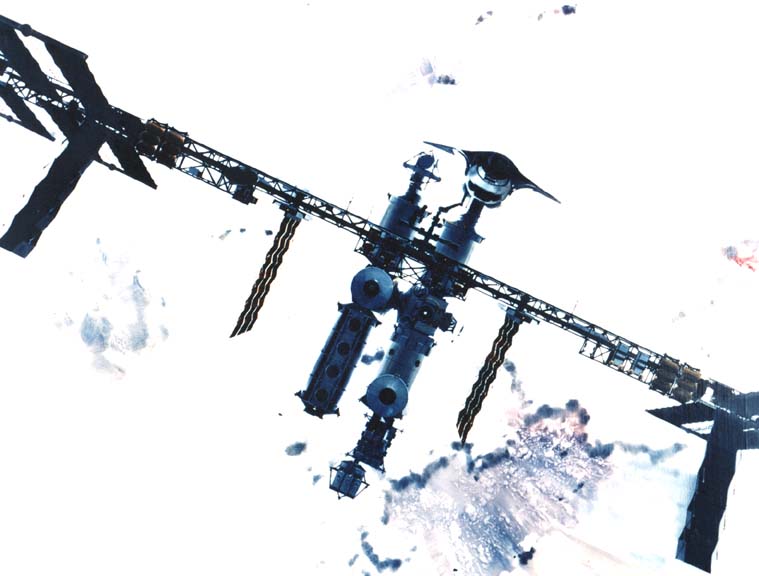Space History Photo: Freedom Space Station Concept

In this historical photo from the U.S. space agency, a concept drawing of Space Station Freedom. Freedom was to be a permanently crewed orbiting base in orbit to be completed in the mid 1990's. It was to have a crew of 4.
Freedom was an attempt at international cooperation that attempted to incorporate the technological and economic assistance, of the United States, Canada, Japan, and nine European nations. The image shows four pressurized modules (three laboratories and a habitat module) and six large solar arrays which were expected to generate 56,000 watts of electricity for both scientific experiments and the daily operation of the station.
Space Station Freedom never came to fruition. Instead, in 1993, the original partners, as well as Russia, pooled their resources to create the International Space Station.
[Far Out Space Station Concepts by NASA (Gallery)]
Each weekday, SPACE.com looks back at the history of spaceflight through photos (archive).
Get the Space.com Newsletter
Breaking space news, the latest updates on rocket launches, skywatching events and more!
Join our Space Forums to keep talking space on the latest missions, night sky and more! And if you have a news tip, correction or comment, let us know at: community@space.com.

The National Aeronautics and Space Administration (NASA) is the U.S. government agency in charge of the civilian space program as well as aeronautics and aerospace research. Founded in 1958, NASA is a civilian space agency aimed at exploring the universe with space telescopes, satellites, robotic spacecraft, astronauts and more. The space agency has 10 major centers based across the U.S. and launches robotic and crewed missions from the Kennedy Space Center in Cape Canaveral Florida. It's astronaut corps is based at the Johnson Space Center in Houston. To follow NASA's latest mission, follow the space agency on Twitter or any other social channel, of visit: nasa.gov.









